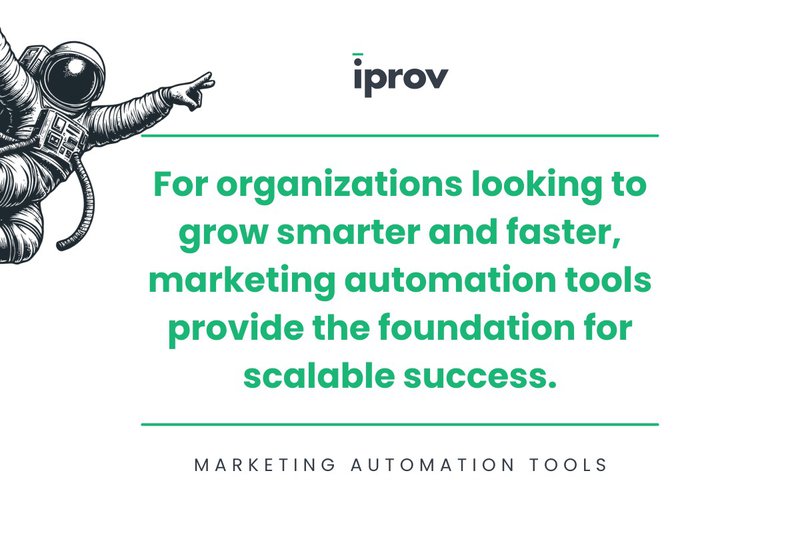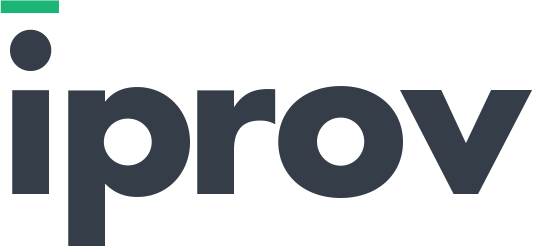
If you run a small business, you’ve probably heard of marketing automation—but is it a good idea in 2025? You're hoping to grow, get more leads, and keep your current clients. So let’s be honest: can automation really help? This guide breaks down everything business leaders need to know about marketing automation: what it is, how it works, the leading platforms available, and best practices for success.
Key Takeaways:
- Best overall for workflow automation: Zapier ($0–$19.99/month); connects over 8,000 apps
- Top value for small businesses: Brevo (free up to 300 emails/day, paid from $8/month) and Omnisend (free plan includes SMS, A/B tests)
- Best for eCommerce: Omnisend and Klaviyo—include cart recovery, product flows, and Shopify/WooCommerce support
- Most scalable with AI: ActiveCampaign ($15/month) and Ortto ($509/month)
- Best CRM connections: HubSpot, Salesforce, ActiveCampaign, and Brevo
- Top free tools: Brevo, Omnisend, Mailchimp
- Top email/SMS flow builders: Omnisend, Klaviyo, Mailchimp
- Core features to look for: CRM integration, drag-and-drop campaign builder, and easy-to-read analytics dashboards
- Key KPIs for success: Open/click/conversion rates, cost per lead, ROI
- Reliable tools for ROI tracking: HubSpot, Ortto, ActiveCampaign, Zapier
Marketing Automation Tools for Business Growth
In today’s fast-paced digital world, businesses must move quickly to connect with prospects, build relationships, and convert leads into loyal customers. Manual processes can’t keep up with customer expectations, which is why marketing automation tools have become essential for organizations of every size.
The right marketing automation platform can streamline repetitive tasks, personalize communication at scale, and provide actionable insights that fuel smarter decision-making. Whether the goal is to increase efficiency, improve customer engagement, or maximize ROI, understanding how to leverage marketing automation tools is key to long-term growth.
What Are Marketing Automation Tools?
Marketing automation tools are software platforms designed to handle repetitive marketing tasks, streamline workflows, and deliver personalized customer experiences. These tools use automation rules and data-driven triggers to execute actions such as sending emails, posting to social media, or segmenting leads.
Instead of manually tracking every customer touchpoint, marketing automation systems create workflows that nurture prospects based on behavior, preferences, and engagement history. This not only saves time but also ensures a consistent brand experience across all channels.
The Key Benefits of Marketing Automation Tools
Adopting marketing automation is more than a productivity boost—it’s a growth strategy. Businesses using automation tools often report stronger customer relationships and higher revenue. Some of the main benefits include:
- Efficiency and Time Savings
Routine tasks like email campaigns, social scheduling, and lead scoring are automated, freeing teams to focus on strategy and creative work. - Personalization at Scale
Automation enables businesses to deliver messages tailored to customer behavior, demographics, and past interactions. This drives engagement and builds trust. - Improved Lead Nurturing
Automated workflows keep prospects engaged over time, gradually moving them through the sales funnel until they’re ready to buy. - Data-Driven Insights
Marketing automation platforms provide analytics dashboards that reveal which campaigns are working, what customers respond to, and where improvements are needed. - Higher ROI
By reducing wasted time and improving targeting, businesses maximize the return on every marketing dollar spent.
Categories of Marketing Automation Tools
Not all marketing automation tools serve the same purpose. Some specialize in email, while others integrate CRM, analytics, and multichannel marketing. Understanding the main categories helps narrow down which solution best fits a company’s goals.
1. Email Marketing Automation
Email remains one of the most powerful channels for nurturing leads. Tools like Mailchimp, Constant Contact, and ConvertKit make it easy to schedule campaigns, set up drip sequences, and track open rates—all without manual intervention.
2. CRM and Customer Journey Automation
Platforms like HubSpot and ActiveCampaign go beyond emails by integrating sales and customer relationship management (CRM). They track leads from first contact through final purchase, ensuring every interaction is logged and actionable.
3. Social Media Automation
Scheduling platforms such as Buffer, Hootsuite, and Sprout Social simplify content posting, engagement tracking, and performance measurement across multiple social networks.
4. Analytics and Reporting
Many marketing automation platforms include advanced reporting tools, but some, like Google Analytics and SEMrush, are dedicated to performance measurement and optimization.
5. AI-Powered Tools
Emerging platforms use artificial intelligence to predict customer behavior, recommend personalized content, and optimize campaign timing. These next-generation tools represent the future of marketing automation.

Top Marketing Automation Tools to Consider
With so many options available, it’s important to identify the platforms that align with business needs. Below are some of the most popular and widely adopted marketing automation tools:
- Mailchimp – Ideal for small to midsize businesses seeking affordable email marketing automation.
- HubSpot – A robust, all-in-one platform covering CRM, email, social, and analytics.
- ActiveCampaign – Known for strong CRM integration and advanced customer journey mapping.
- Constant Contact – User-friendly, with solid features for newsletters and small-business campaigns.
- ConvertKit – Favored by creators and influencers for its simplicity and automation workflows.
- Marketo – A powerful enterprise-level solution with deep analytics and scalability.
Each of these marketing automation tools has unique strengths. Choosing the right one depends on budget, team size, and the level of complexity required.
How to Choose the Right Marketing Automation Tools
Selecting the best tool requires more than looking at price or popularity. Businesses should evaluate:
- Goals and Objectives – Is the focus on lead generation, customer retention, or multichannel engagement?
- Scalability – Can the tool grow with the company as needs evolve?
- Integrations – Does it connect with existing software like CRM, e-commerce platforms, or analytics tools?
- Ease of Use – A platform should empower teams without requiring months of training.
- Support and Resources – Reliable customer support and a strong knowledge base make adoption smoother.
By carefully considering these factors, businesses can invest in marketing automation tools that deliver long-term value.
Best Practices for Using Marketing Automation Tools
Once a platform is selected, success depends on how it’s used. Here are best practices to maximize results:
- Segment Audiences – Group customers by behavior, purchase history, or demographics to deliver more relevant campaigns.
- Personalize Messaging – Use automation to insert names, recommend products, or adapt content to customer interests.
- Test and Optimize – A/B testing subject lines, content, and timing ensures campaigns continually improve.
- Align Sales and Marketing – Automation works best when both teams collaborate, sharing insights and data.
- Maintain Human Touch – Automation should enhance—not replace—authentic customer relationships.
Common Mistakes to Avoid
While marketing automation tools are powerful, misuse can lead to missed opportunities. Avoid these pitfalls:
- Over-Automation – Too many automated messages can feel impersonal and push customers away.
- Poor Data Management – Outdated or incorrect data leads to irrelevant campaigns.
- Ignoring Analytics – Failing to track performance prevents optimization.
- One-Size-Fits-All Campaigns – Without segmentation, automation loses effectiveness.
Avoiding these mistakes ensures automation strengthens brand credibility instead of harming it.
The Future of Marketing Automation Tools
The marketing automation landscape is evolving rapidly. Artificial intelligence, predictive analytics, and machine learning are reshaping how businesses communicate with customers. Future automation platforms will likely:
- Predict buying behavior with greater accuracy
- Deliver hyper-personalized content in real time
- Automate more complex customer journeys across multiple channels
- Integrate seamlessly with voice, video, and emerging communication platforms
Businesses that stay ahead of these trends will be better positioned to connect with audiences and drive sustained growth.
Unlocking Growth with Marketing Automation Tools
Marketing automation tools are no longer optional—they’re a necessity for businesses that want to stay competitive. From streamlining workflows to personalizing customer experiences, the right platform can transform the way companies engage with their audiences.
By choosing wisely, implementing best practices, and avoiding common pitfalls, businesses can harness marketing automation to achieve greater efficiency, stronger customer relationships, and measurable ROI.
For organizations looking to grow smarter and faster, marketing automation tools provide the foundation for scalable success.
Ready to see how the right marketing automation strategy can transform your business? At iProv, we help organizations identify, implement, and optimize the best marketing automation tools to achieve lasting results. Contact us today to start building a smarter, more effective marketing system.
